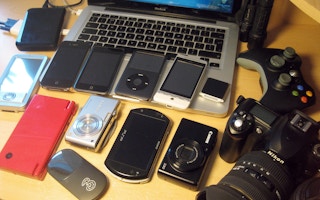We have two competing visions of our future. One, the utopian idea that technology will solve all our environmental problems. It will give us unlimited clean energy and even fix existing problems, like removing microplastics from the oceans. And two, the dystopian vision, where our demand for high-tech gadgets just makes things worse.
For instance, the massive strip mines that destroy more of the natural world to give us materials for technology, only for the resulting products to be thrown into landfills after their brief lives. But maybe we are looking at technology the wrong way.
“Technology is simply a tool. It can have a major positive impact on the environment, but it depends on how it is created and used,” says Ernesto Hartikainen, the lead specialist on circular economy at Sitra, the Finnish Innovation Fund, an independent public foundation that operates directly under the supervision of the Finnish Parliament. And a classic example of the good use of tech is clean energy.
“Let’s look at one major example: technology and energy,” Hartikainen continues. “Today we mostly use fossil fuels to produce energy, but we can’t continue to release so much carbon into the atmosphere. Technology can help us with intermediary solutions – such as natural gas and nuclear power – as well as renewable sources like solar, wind and biomass.”
The flipside
Technology can also help us be more energy efficient. Connected devices in homes can lower heating and cooling costs, save us from wasting food or even automatically run when there is less demand for energy, such as by washing a load of laundry at night. Although these new gadgets sound great, it leaves out a major piece of the story.
“Remember, the production of these materials also causes carbon emissions, habitat destruction and resource depletion. We also need to consider what happens at the end of these gadgets’ lives,” explains Hartikainen. “The answer to this problem is a circular economy.”
The current economic system is linear. That is, we harvest resources, manufacture products and then dispose them. For example, many of our technological gadgets have obsolescence planned from the outset.
“
If we reuse perfectly good equipment, we neither need to mine new virgin materials nor dispose old items. And people are increasingly recognising this: the value of old equipment.
Life is a circle
The circular economy is just what the name implies: a closed-loop system to keep materials in use longer. It is not simply recycling. The circular economy philosophy includes how items are designed, maintained and reused.
The company, 3 Step IT has taken this concept to corporate IT equipment. When laptops, desktops, mobile devices, servers or routers come to an end of their time at a company, 3 Step IT collects them, wipes their memories, refurbishes them and sells them to new owners. About 98 per cent of their equipment is reused and only 2 per cent recycled.
“Our business model is the circular economy,” explains Marko Tarkiainen, Managing Director for 3 Step IT in Finland and the Baltics. “Our solution has to be financially beneficial to our clients, but sustainability is increasingly also at the front line of decision making.”
Recycle, refurbish, reuse
As a rule of thumb, the lifespan of a mobile device is about two years while a computer lasts around three years. But what happens next?
“A worst-case scenario would be for a company to simply lose control of their IT environment,” Tarkiainen continues. “Old equipment is stuffed in closets. Computers might disappear, end up in landfills, or even be burned improperly to recover their metals, releasing toxins into the environment.” But 3 Step IT sees old technology as an asset.
If we reuse perfectly good equipment, we neither need to mine new virgin materials nor dispose old items. And people are increasingly recognising this: the value of old equipment.
“Companies, governments and organisations all over the world buy these refurbished devices,” says Tarkiainen. “Eventually these devices will come to the end of their lives, so we only sell them in countries with developed e-waste recycling governance in place.”
This model has worked well with computers, but it could also be used for other tech equipment as well. Tarkiainen’s company is currently looking at opportunities in other industries like health care devices or IoT equipment.
Energy completes the circuit
Circular solutions can give us more of the environmental benefits of smart technology with less of the downsides. However, the circular economy needs energy solutions to work as well. As Hartikainen explains, in one way or another, energy remains crucial to solve our environmental problems.
“Energy is extremely important. Society needs energy and material circulation needs energy,” says Hartikainen. “This gives energy technology companies like Wärtsilä a key role in enabling the circular economy.”
“For instance, the world needs electric vehicles. Yet we have to consider the demand for virgin materials. The Organisation for Economic Co-operation and Development (OECD) projects that our current materials demand will double by 2060,” explains Hartikainen.
“Batteries are a solution, but we also need operational solutions to recycle these batteries at the end of their lives. Now is the time to begin working on these issues,” he concludes.
David J. Cord is the author of The Decline and Fall of Nokia, Dead Romans and Mohamed 2.0. He is an active journalist and writes strategic communications for corporations and government organisations. This article first appeared in the Wärtsilä website.











